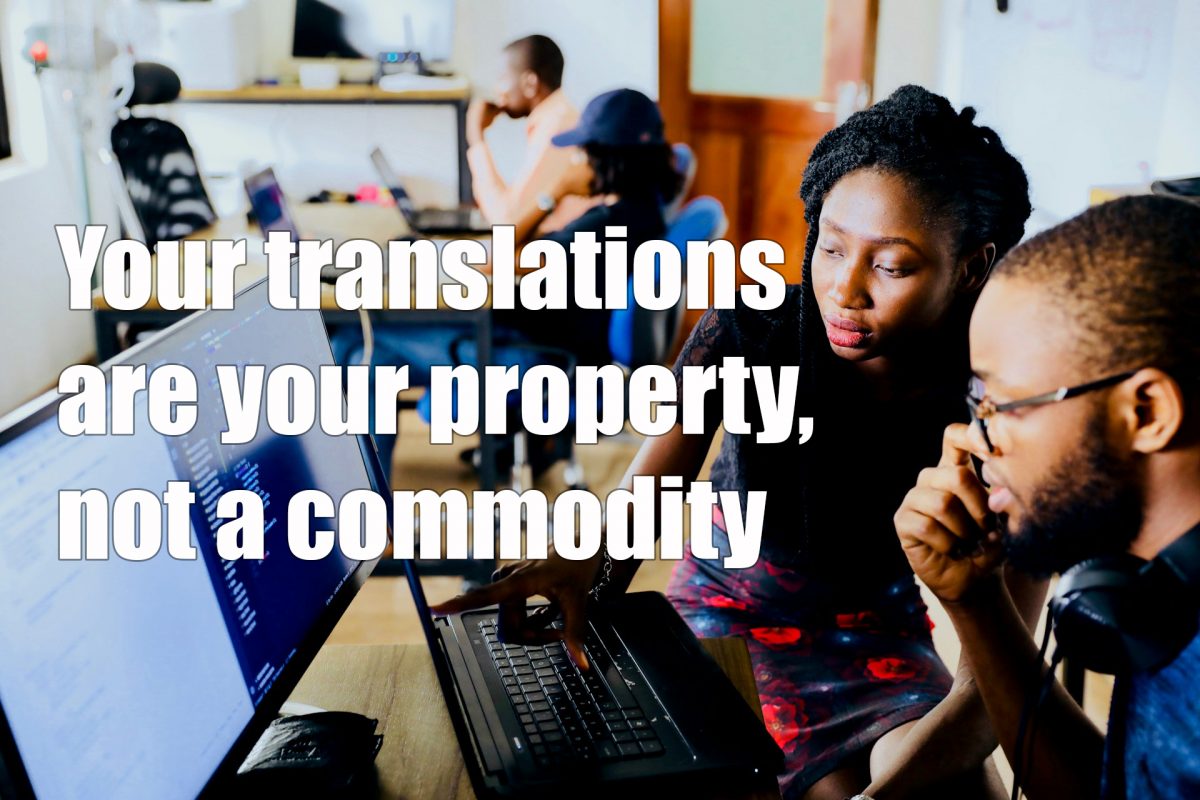
Translation has become so easy to access, thanks to technological advances, that corporations easily fall into the mindset of treating translation like a commodity, or maybe even a troublesome extra step they wish would just go away. This is a trap, though, because it overlooks the enormous potential of translation, localization, and transcreation, and how they allow your content to help your brand or product flourish in more markets. So, ask yourself this question: Is your content your property, or a commodity? Because your translations are your content.
An erroneous mindset
Unless your content is so short-lived and/or rapidly updated that it can legitimately be categorized as a commodity, any translation based on it is not just a commodity. It’s understandable that some people embrace the false notion that it is a commodity. For one, translations in this day and age have become standardized and tradable, in that basic translations of common phrases or technical terms can be standardized and readily available at the click of a button. Instruction manuals would be a good example of this, where it’s often preferable for “Press the START button” to appear the same way each time it appears in a translation, just as it does in English. Even before AI, CAT (Computer Assisted Translation) tools powered by TM (Translation Memory) contributed to this mindset.
Another factor contributing to the “commodity mentality” is that translated terms are often fungible or interchangeable like any other commodity. Common terms used in a certain language by one company are likely to be identical to those used by another company. These bottom-line appealing factors make it so easy for those in charge of content localization to treat their own translations like a commodity also, but that’s a big mistake. One problem with this mindset is that it eventually undercuts quality control in that translations start to be seen as interchangeable and undeserving of the same quality assurance processes applied to the consumer products and services they represent.

Making it make sense
Just as every coin has another side to it, so does translation. Especially when you get into marketing translation, where localized texts not only need to be accurate, but also appealing and compelling, the commodity mindset just doesn’t cut it. In this domain, translations might need to be so highly creative, nuanced, and original, that they may be considered intellectual property.
Good marketing translation considers the context and purpose of the original text, while not necessarily being constrained by the sentence and paragraph structures of the source language. This goes counter to common CAT tool-based translations which essentially require the target text to adhere to the source text’s structure, sentence by sentence or paragraph by paragraph.
Sometimes such constraints are imposed not by the tools being used, but by a well-intentioned customer. Let’s say a company’s person in charge is tasked with cross-checking the translated target text against the original source text but has no linguistic capability in the target language. It’s most likely that this person would check to see if language A matches language B. If one language has more sentences that the other, that raises a red flag. Some may even want the punctuation between the two languages to be identical.
The only proven way to overcome these types of counterproductive constraints is to develop a sense of trust between LSP (Language Service Provider) and client. That may take time, but once you’ve got that trust, it will become easier to recognize that customization makes localized texts more like a unique creation, optimized in their appeal to the target audience. There’s nothing commodity-like about that.
If a client has a specific style they wish the translator to follow, based on prior content or through other types of creative input, we encourage them to let their LSP know at an early stage rather than waiting until the translation is delivered. Translators tend to be quite nimble in this regard, able to mimic various styles as the situation requires. Also, LSPs have access to a large pool of translators, so are able to find alternative resources for you in case you want something different.
Taking the translation-as-property analogy a step further, try thinking about it this way: Translating/localizing your content is like owning real estate in each country, although it’s on the Web or other media instead of on land. It’s permanent until you decide it’s time to renovate (e.g. update your site). This fundamentally differs from, say, advertising, which is more like rental space that’s here one day and gone the other, and requires constant re-investment to keep running. It’s therefore critically important for your website and other content to be high quality in any language you present it in, that is, if you want customers to keep coming back.
Although simple and repetitive translations can come across as commodities, they deserve the same level of attention to quality as the original text, if only to show respect to the reader. And remember, creative translations with unique phrasing and deep cultural understanding are more like property. If you neglect them, they lose their value. If you are proud of your content, you should be equally proud of your translations, so treating them all like your property is the only mindset that makes sense.
Douglass McGowan






